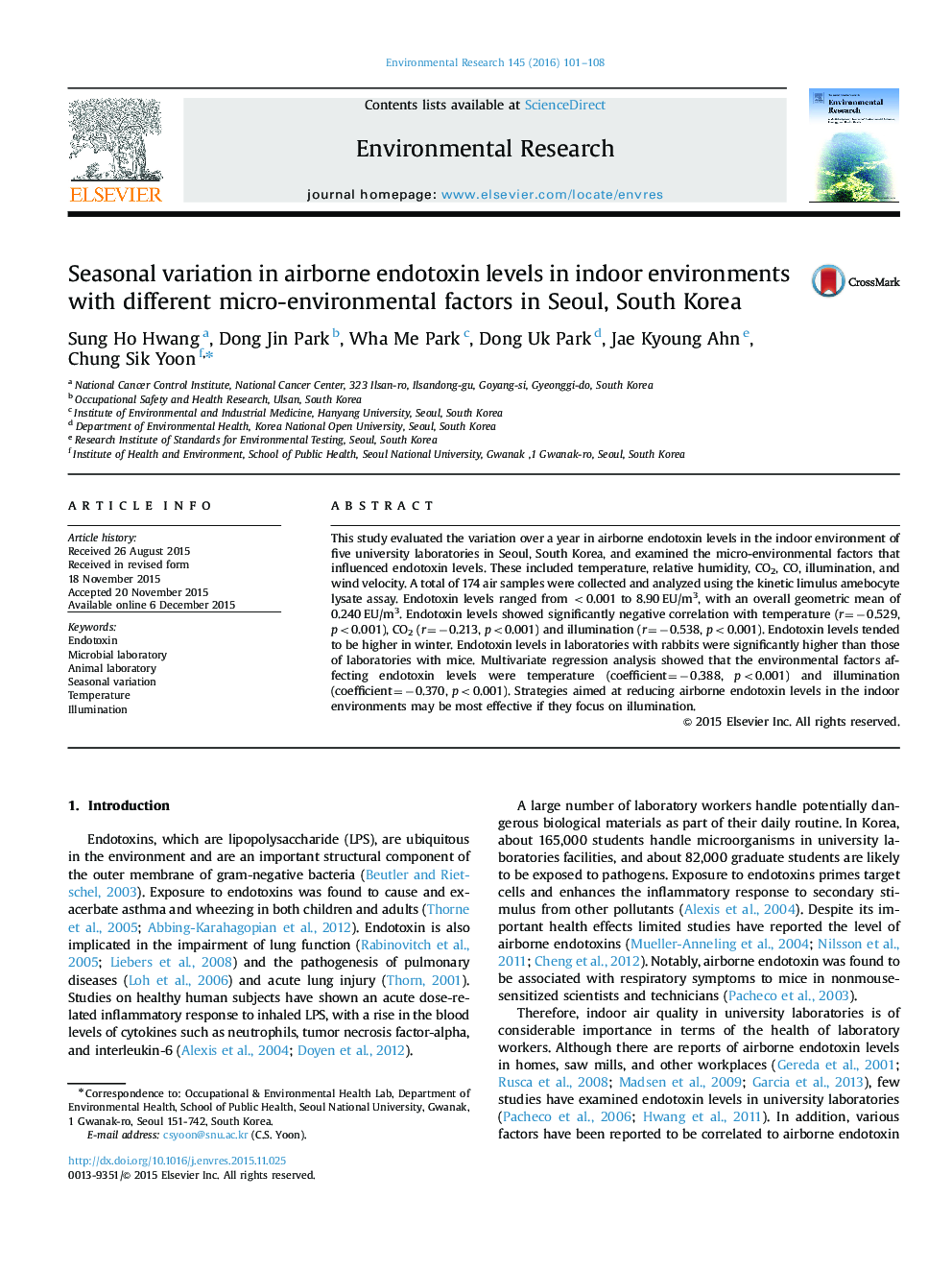| Article ID | Journal | Published Year | Pages | File Type |
|---|---|---|---|---|
| 6351481 | Environmental Research | 2016 | 8 Pages |
â¢Temperature and illumination was negatively correlated with airborne endotoxin levels.â¢Ventilation system is an important factor which decreased the levels of endtoxin.â¢High illumination is required to minimize endotoxin exposure in indoor laboratories.
This study evaluated the variation over a year in airborne endotoxin levels in the indoor environment of five university laboratories in Seoul, South Korea, and examined the micro-environmental factors that influenced endotoxin levels. These included temperature, relative humidity, CO2, CO, illumination, and wind velocity. A total of 174 air samples were collected and analyzed using the kinetic limulus amebocyte lysate assay. Endotoxin levels ranged from <0.001 to 8.90Â EU/m3, with an overall geometric mean of 0.240Â EU/m3. Endotoxin levels showed significantly negative correlation with temperature (r=â0.529, p<0.001), CO2 (r=â0.213, p<0.001) and illumination (r=â0.538, p<0.001). Endotoxin levels tended to be higher in winter. Endotoxin levels in laboratories with rabbits were significantly higher than those of laboratories with mice. Multivariate regression analysis showed that the environmental factors affecting endotoxin levels were temperature (coefficient=â0.388, p<0.001) and illumination (coefficient=â0.370, p<0.001). Strategies aimed at reducing airborne endotoxin levels in the indoor environments may be most effective if they focus on illumination.
